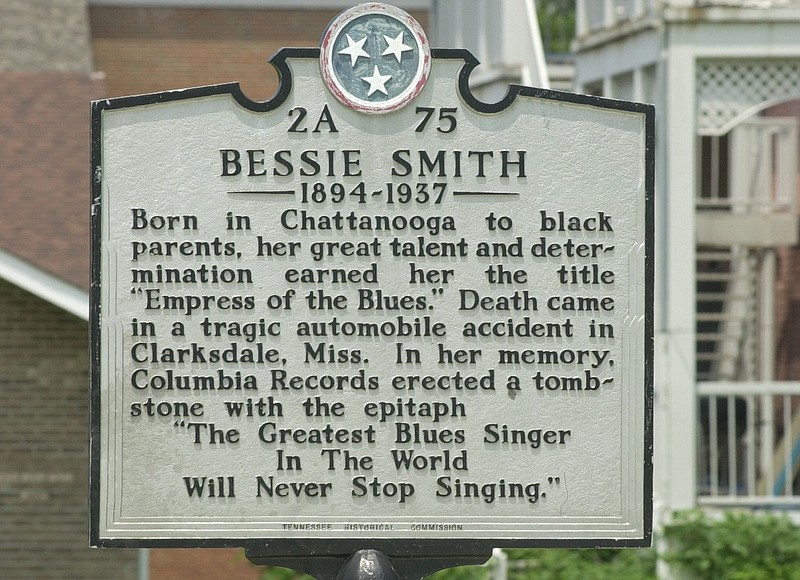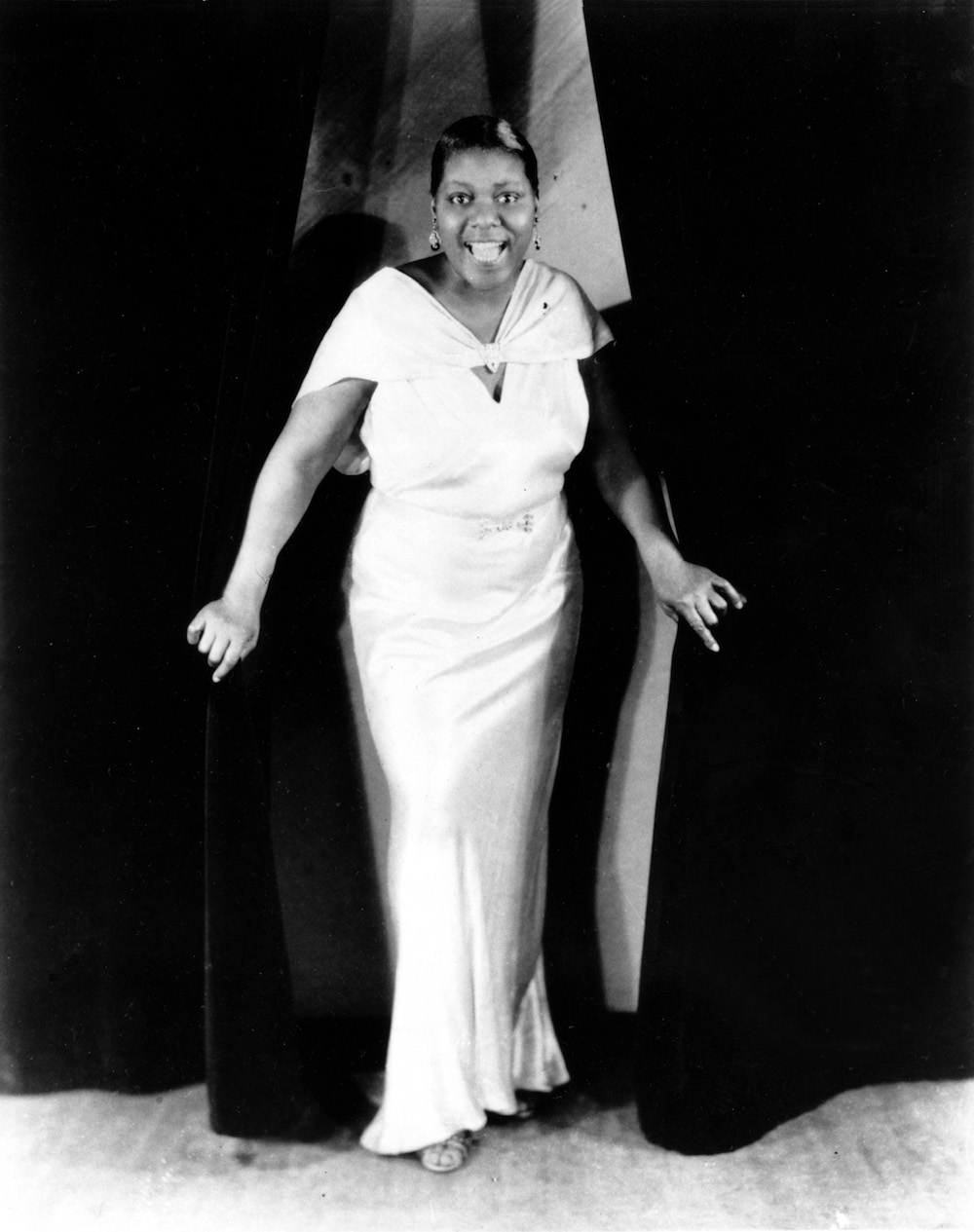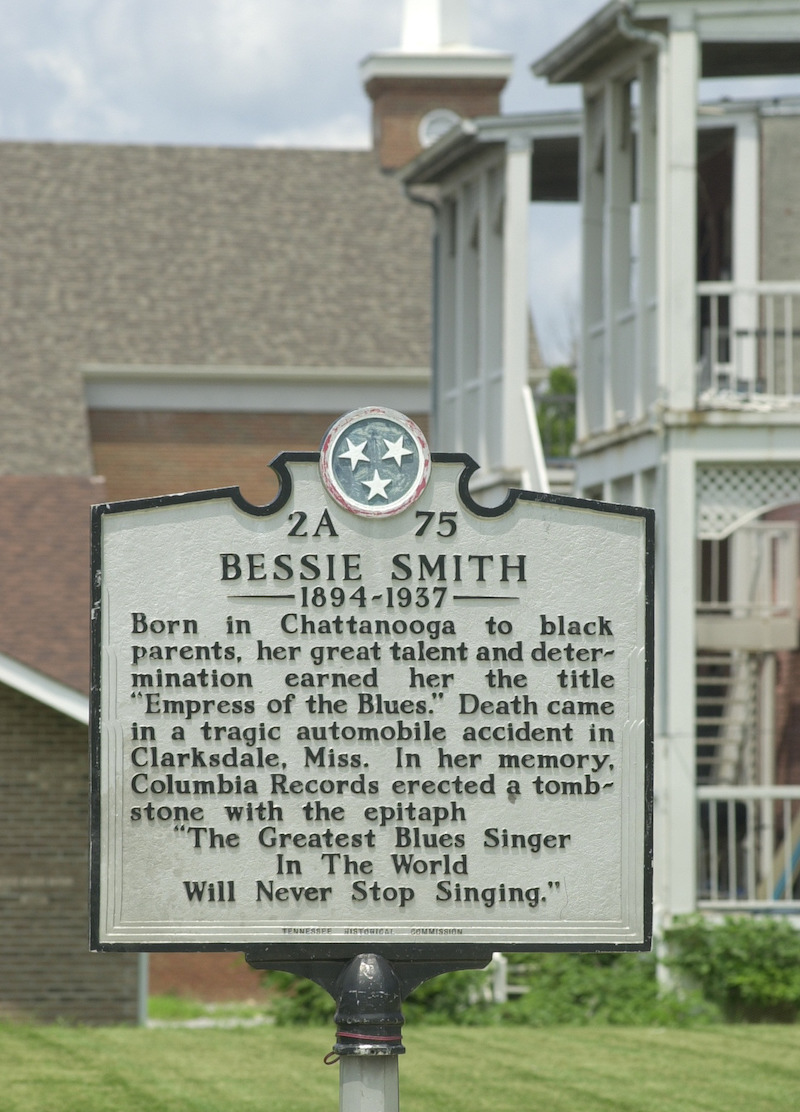In the days following the death of the Empress of the Blues, newspapers across the nation carried the story. One day after the Sept. 26, 1937, fatal car crash, The Chattanooga News carried the story of "the death of Bessie Smith, famous blues singer, who started her career on East Ninth Street. She was a native of Chattanooga and traveled from Ninth Street to Beale Street and to Broadway as one of the outstanding recorders of the blues song and radio singers of her race."
The Montgomery Advertiser proclaimed that "Broadway welcomed her and the bright lights of other cities added to her glory," while The Detroit Tribune's headline read: "Bessie Smith, Noted Singer, Loses Life in Auto Crackup: Was on Way to Keep Stage Appointment in Memphis." The Pittsburgh Courier used large, bold type in proclaiming that the "Moanin' Blues Voice of Bessie Smith Will Never Be Heard Again," followed by a smaller headline reminiscing that the "public bought four million of her records between '24 and '29."
The Pittsburgh newspaper article began its account of her death with eloquent words: "Bessie Smith, for many years the queen of the blues, crossed the River Styx the other day, cut away from early life on the brink of 43. In Bessie Smith the profession has lost one of its most important pillars the throbbing, husky voice of the blues queen will remain immortal. Putting her heart and soul into her songs, with a pureness that seemed to cry out for the true freedom of her people ."
Who was the nationally known celebrity whose name identifies Chattanooga's cultural center on Martin Luther King Boulevard? Most know she was a blues singer, but few in her hometown know the extent of her acclaim or recognize her continuing legacy, almost 85 years after her death.
Born into poverty and orphaned at an early age, Bessie Smith and her brother, Andrew, earned money for the family of seven siblings by entertaining on the streets of Chattanooga. When Bessie was only 17 or 18, her birth date uncertain, she joined an older brother, Clarence, as a member of a musical troupe where her voice drew crowds and the attention of famed blues singer Ma Rainey. After gaining experience traveling and performing with the Rainey entourage, Bessie's voice landed her in touring musicals and vaudeville shows where she entertained Black audiences from New England through the Deep South. Her fame spread, and she parlayed that name recognition into her own show, fronting her own band of skilled musicians.
By 1923, Columbia Records recognized that she had "star quality" and offered her a contract with the division known as "race records," recordings featuring Black performers designed to be distributed to Black listeners. Bessie negotiated her first contract and received $1,500 for recording 12 songs, a lucrative agreement for an artist of color. When her first record, "Downhearted Blues," sold more than 500,000 copies, Columbia knew they indeed had a star and paired her with some of the most famous musicians of the era, including a young Louis Armstrong.
Now a recognizable name and voice, Bessie Smith hit the theater and club circuit, commanding more than $2,000 per week, making her the highest paid Black artist in the nation. Imagine the crowds at the rail stations as Bessie roared into town aboard her own custom Pullman sleeping car and arrived at sold-out theaters where the crowds clamored for additional shows or "standing room" tickets.
And then the times changed, as they are inclined to do.
Radio overshadowed recordings and, with the advent of the Great Depression, listening to live broadcasts at home was significantly cheaper than attending live performances. Touring became less profitable. Bessie Smith became a regular on the Harlem Renaissance club circuit - the Apollo, the Cotton Club and local theaters. While she continued to work, blues became less popular than jazz, and her contracts became less rewarding.
On that night in September 1937, Bessie Smith's driver did not see a truck on the road, swerved and lost control. The Empress of the Blues was thrown from the car and died hours later. She would not have a tombstone until 1970 when Janis Joplin and NAACP leader Juanita Green Smith would commission a marker that announced, "Bessie Smith - The Greatest Blues Singer in the World Will Never Stop Singing."
Linda Moss Mines, the Chattanooga-Hamilton County historian, is regent, Chief John Ross Chapter, NSDAR, and is a board member of the African-American Cemetery Preservation Fund.


